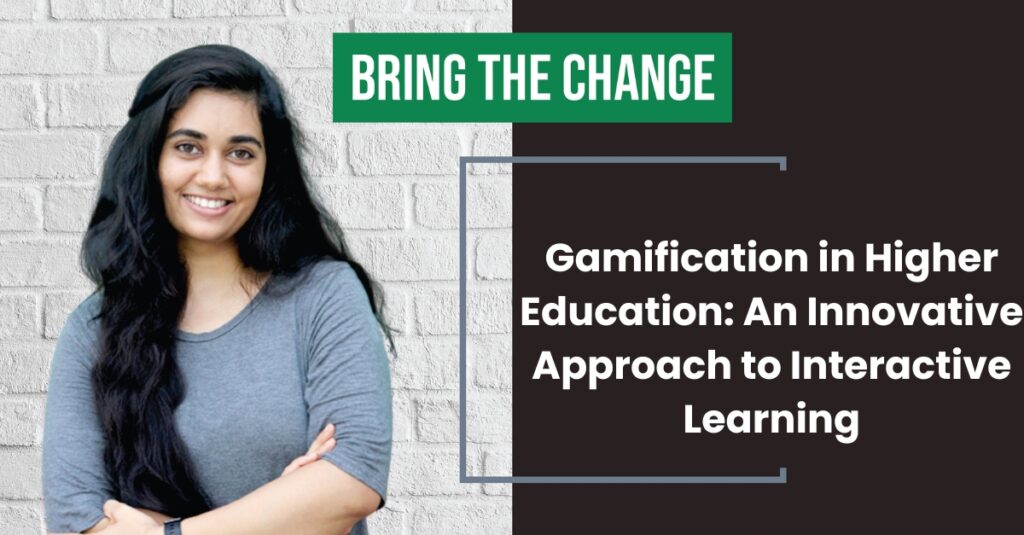Gamification in education includes inculcating game-like elements and techniques into the learning process. It helps in creating a more engaging and interactive educational experience for both the teachers and students.
Educators aim to motivate and involve students by enhancing their participation and improving learning outcomes by incorporating elements such as points, badges, leaderboards, and challenges. This approach leverages the principles of game design to make learning more enjoyable, foster active participation, and encourage students to take a more proactive role in their education.
Gamification can be applied in various educational contexts, from traditional classrooms to online courses, and it aims to make learning a dynamic and immersive experience that resonates with modern students.
What is Gamification?
Gamification is the application of game design elements, mechanics, and principles to non-game contexts, used to engage and motivate individuals to learn and fulfil their objectives and desires.
It involves incorporating game-like features such as points, badges, leaderboards, challenges, and rewards into activities that are not inherently games. The aim is to make tasks or processes more engaging, enjoyable, and motivating, which encourages participation, learning, or desired behaviours.
Gamification leverages the psychological aspects that make games appealing, such as competition, achievement, progression, and a sense of accomplishment. By introducing these elements into various fields like education, marketing, employee training, health, and more, gamification seeks to enhance user engagement, increase motivation, and improve outcomes.
Overall, gamification taps into the innate human desire for challenge and achievement, using game-inspired techniques to make various activities more compelling.
Impact of Gamification in higher education
The impact of gamification in higher education can be significant, affecting various aspects of the learning experience. Here are some of the key ways in which gamification can influence higher education:
1. Increased Engagement: Gamification makes learning more interactive and engaging by incorporating elements like points, badges, and leaderboards. This heightened engagement can lead to increased participation and motivation among students.
2. Active Learning: Gamified activities often require students to participate, solve problems, and make decisions actively. This shift from passive learning to active engagement can enhance students’ critical thinking and problem-solving skills.
3. Improved Retention: Games and gamified activities often provide immediate feedback, which can help reinforce learning and improve information retention. The interactive nature of gamification can make complex concepts more memorable.
4. Personalized Learning: Gamified systems can be tailored to individual student’s preferences and learning styles. This personalization can cater to proficiency levels and enhance the learning experience.
5. Enhanced Collaboration: Many gamified activities encourage student teamwork and collaboration. This collaborative approach mirrors real-world scenarios and prepares students for working in interdisciplinary and diverse environments.
6. Motivation and Achievement: The competitive nature of games can motivate students to strive for excellence. Achieving goals, earning rewards, and competing with peers can contribute to accomplishment and satisfaction.
7. Real-World Application: Gamification can simulate real-world situations and challenges, enabling students to apply theoretical knowledge in practical contexts. This bridge between theory and application enhances their understanding and readiness for the workforce.
8. Continuous Learning: Gamified systems often encourage continuous learning by offering new challenges, levels, or content. This helps foster a habit of lifelong education and exploration.
9. Overcoming Aversion to Learning: For some students with negative perceptions of traditional education, gamification can provide a more appealing and approachable learning environment.
However, it’s important to note that successful implementation of gamification requires careful planning, alignment with learning objectives, and consideration of individual learning preferences. Additionally, it’s crucial to balance gamified elements and the core academic content to maintain educational integrity.
In summary, gamification can transform higher education by enhancing engagement, motivation, and active learning. When used effectively, it can create a dynamic and immersive learning experience that prepares students for the challenges of the modern world.
Pros and Cons of using gamification in Education
Using gamification in education comes with its own set of advantages and disadvantages. Let’s explore the pros and cons:
Pros of Gamification in Education:
- Increased Engagement: Gamified elements like points, badges, and rewards make learning more interactive and enjoyable, leading to higher student engagement.
- Motivation: The competitive nature of games can motivate students to participate, complete tasks, and strive for improvement actively.
- Active Learning: Gamification encourages active participation, critical thinking, and problem-solving as students work towards objectives in a dynamic environment.
- Personalization: Gamified systems can be tailored to individual students’ learning preferences and paces, fostering a personalised learning experience.
- Instant Feedback: Games often provide immediate feedback, helping students understand their progress and areas for improvement in real time.
- Skill Development: Gamification can promote the development of a range of skills, including teamwork, decision-making, time management, and goal setting.
- Retention: The engaging nature of games can enhance information retention and memory recall, making learning more effective.
Cons of Gamification in Education:
- Superficial Engagement: Students might focus on earning rewards rather than deepening their understanding of the subject matter.
- Short-Term Focus: Gamification might focus on short-term goals, potentially neglecting the long-term learning objectives.
- Exclusion: Some students may not be motivated by gamified elements, leading to feelings of exclusion or disinterest.
- Distraction: Excessive gamification could lead to distractions if students become overly engrossed in the game elements rather than the educational content.
- Dependency on Rewards: Students might become dependent on external rewards, diminishing their intrinsic learning motivation.
- Complex Implementation: Designing effective gamified systems requires careful planning and execution, which can be time-consuming and resource-intensive.
- Uneven Participation: Some students might excel in gamified settings while others struggle, potentially widening the achievement gap.
In conclusion, gamification can be a powerful tool to enhance engagement and motivation in education, but its implementation should be balanced and thoughtful. It’s essential to consider the learning objectives, individual student preferences, and potential drawbacks to ensure that the benefits of gamification are effectively harnessed while minimising its limitations.

